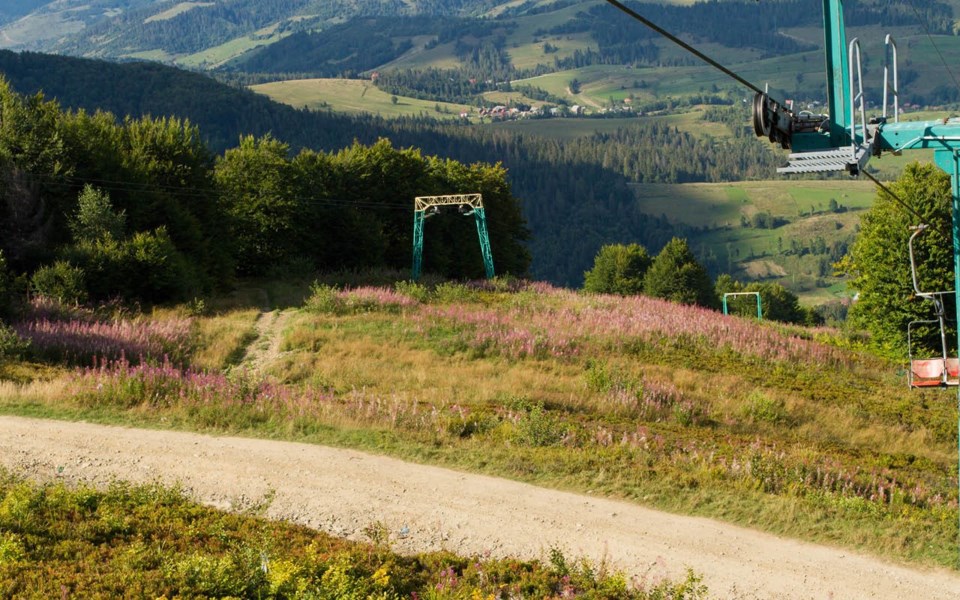SOUTH LAKE TAHOE, Calif. — Heavenly Mountain Resort plans to widen a dozen trails and remove potentially hundreds or even thousands of trees and scale down boulders to improve skiing during low-snow seasons.
By making terrain more skiable with less snow, the operators reduce the amount of snowmaking necessary to open runs, explained the Reno Gazette-Journal. The newspaper noted that the changing climate is expected to produce more drought winters.
"During low snow years, a great deal of energy and water resources for snowmaking are required to provide enough snow on these trails so they can be safely opened," noted the draft environmental impact statement prepared for the U.S. Forest Service.
Height of the natural features can require up to 1.5 metres or more of snow before runs can be opened, the assessment said.
Snow arrives finally
TELLURIDE, Colo. — Bill Jensen, chief executive of the ski company at Telluride, last week stood atop his mountain to tell viewers of a TV station in Dallas his happy news. The ski area, he said, had received 1.5 metres of snow in the last three weeks and has "miles and miles of nice blue runs" open along with heli-skiing for those more adventurous.
For Telluride, the drought has relented. But it's not broken. A drought map released last week, before the latest storms, shows a red blob across southwest Colorado.
Portions of New Mexico have been in red, extreme drought. Taos Ski Valley was able to boast of 58 centimetres of new snow but still only 49 of the 110 ski trails were open, relatively few of them black diamonds.
That same map showed California in brown and yellow, not as severe as Colorado. Still, the San Francisco Chronicle on Feb. 17 reported experts believe it will take a Miracle March such as has never before occurred in recorded history to pull the Sierra Nevada out of its deep drought.
"But the odds are long and even a very wet March would be unlikely to erase the very large snowpack deficits that exist statewide and the equally deep rainfall deficits across southern California," said Daniel Swain, a climate scientist the University of California Los Angeles.
California has also had periodic and extended droughts. It had been dry for five years when, at the end of February 1991, the snow-water content in the northern Sierra was 15 cm. "Then all of a sudden in March 38 cm of snow-water equivalent fell. The average in March is nine cm of snow-water content," David Rizzardo, chief of snow surveys at the California Department of Water Resources, told the Chronicle.
In mid-February, the average water content in the Northern Sierra stood at 12 cm. If a Miracle March moved the region up another 38 cm, as occurred in 1991, "we'd still be a long way from reaching what's considered normal," the newspaper reported.
"That Miracle March was 15 inches (38 cm), and we're trying to add 24 inches (61 cm) to get to normal," Rizzardo said. "It's extremely unlikely."
The problem this year — and in past droughts, too — is a high-pressure system that is causing storms to swing north through Alaska and then southward. A new hypothesis reported in December predicts increased likelihood of that high-pressure ridge in coming years due to melting sea ice in the Arctic.
Whether evidence arrives to corroborate that hypothesis or disprove it, other work continues to sound an alarm about more extreme weather.
The latest report, by Stanford University's Noah Diffenbaugh and colleagues from Columbia University and Dartmouth College finds that even a one-degree-Celsius rise in temperatures could increase the likelihood of extreme weather.
Previous studies have demonstrated how accumulating greenhouse gases in the atmosphere have increased the probability of record-breaking hot, wet, and dry events in the present climate.
Diffenbaugh and his colleagues examined climate models to estimate the probability of future extreme weather events depending upon the rise in global temperatures. Those rising temperatures, in turn, are linked to how well the world's countries meet their greenhouse reduction targets as specified by the Paris Climate agreement of 2015.
Even if countries meet their commitments, according to their study, a two-to-three-degree increase will also likely result in a greater than three-fold increase in record-breaking wet days over more than 35 per cent of North America. The hot days will be accompanied by milder cold nights and shorter freezes.




